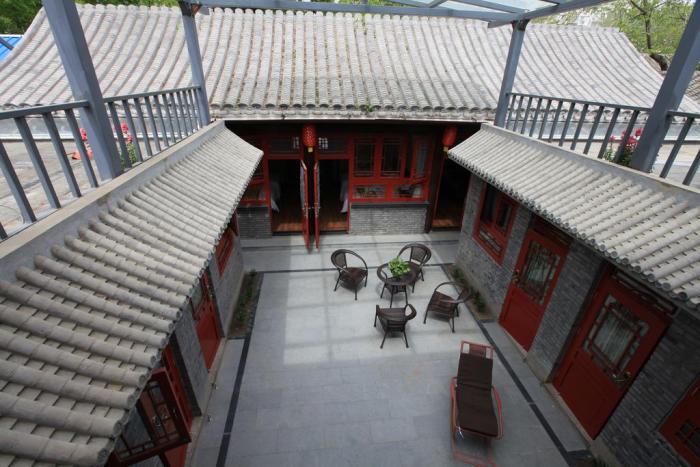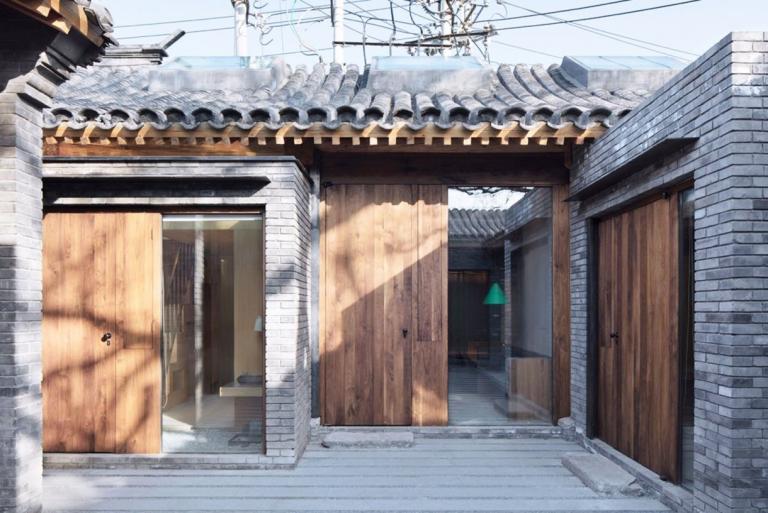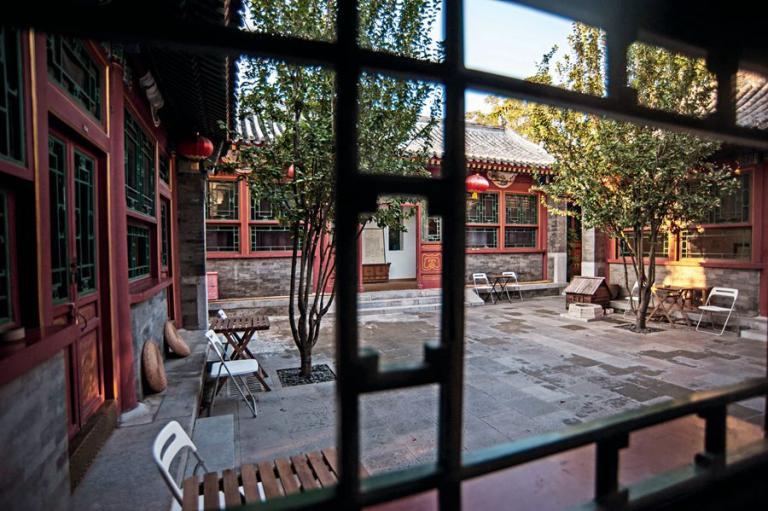Elegant Siheyuan in LINGSHUI Village
5 min readEntering Lingshui Village, one will be impressed by the ancient residential compounds,known as Siheyuan, typical of Beijing, with houses enclosing courtyards in three or fivesteps. Although the structures appear to be mottled and damaged, visitors can sense thehistory imbued in each of the bricks and tiles.

Some of the houses in Lingshui can be tracedback to the Ming Dynasty, while the largest majority dating to the Qing. In the past, thecompounds encompassed houses of dark bricks and gray tiles arranged in an orderly layout,gate towers, screen walls, stone steps, and beautiful decorations.Unfortunately, during the period of the War of Resistance Against Japanese Aggression(1937—1945), the village endured multiple fires set by the Japanese army, and many of theancient homes were burnt to the ground. Of the 162 residential compounds, only six stillhold 22 houses of the Ming period, and about 120 Qing houses have survived.
The compoundsgenerally embrace a single courtyard, surrounded by houses in four sides, while some includethree or five courtyards, one after another, each enclosed by houses on four sides.The No.92 Compound near the entrance to the village is well-preserved, with a singlecourtyard. The gray-hued houses, with exquisite wood carved doors and windows, lookpristine and elegant. The gate tower features a flush gable roof and contains a niche enshriningthe God of Gate on the left. The stone walls on both sides of the gate are engraved withcharacters meaning “Giving Priority to Reading” and “One Good Turn Delights Many,”respectively. Outside the gate tower is an exterior screen wall.Feudal hierarchy is also embodied in the bricks and tiles of the houses.
The gates, forexample, were divided into different categories, such as Gate of High Nobility, Gate ofGreat Brightness, Gate of Golden Column, and Gate of Happiness. The gates of differenttypes not only vary in architectural forms, but more importantly, they reflect the strict conceptof hierarchy. The gate shape, eaves, screen wall, door planks, and even doomails tell theidentity and social status of the host of the house, civil official or martial general, wealthy oraverage. In the feudal society, dominated by a stern hierarchal system, the residential housesand even the gates of the houses directly represented the social status of the family.The Great Gate Tower of No.78 Compound, on the axis of the village, is a brick andwood structure, with an overhanging roof. On the top is a double-tier rafter, with exquisitelysculpted brick eaves protruding on both sides. Except for the main gate, no single wood wasused in the structure. It is said that the tower is the only existing building dating to the Yuan Dynasty in the village. Beneath the caves of the tower are brick engravings in the designs oflotus and fish, which symbolize the family‘s wish for prosperity in successive years.According to traditional Chinese culture, the lotus represents its homophone meaningsuccession and fish stands for its homophone meaning surplus. Combined, the design impliesthe meaning of “enjoying prosperity year after year.”Secure ScreensScreen wall, very commonplace in Lingshui, is a decorative wall erected inside and This stone lane used to same caravans in the ancient times.outside the gate ofresidential compounds.The ridges of thescreen walls are engravedin various designs, andbeneath the ridges aretube-tile eaves, varying instyle.

The foundationsand frames of the wallsare decorated with brickengravings, and in thecenter of the walls areusually auspicious wordslike “Great Happiness”and “Good Luck.”An ancient Chineseidiom goes somethinglike this: “Trouble arisesbehind the screen wall.”In ancient times, inaddition to its aestheticalfunction, a screen wall was erected to prevent external evil spirits from entering the house.The historical residential houses in Lingshui are not just distinctive in architecturalstyle, but also special in decoration. The brick engravings, stone engravings, and woodengravings decorating the houses are all beautiful and elegant, showing an exquisitecraftsmanship. Auspicious patterns can be found everywhere in the village. Plum blossom,orchid, bamboo, and Chrysanthemum — reputed to be the four noblest flowers in China —are widely used as the designs of decoration, implying the moral loftiness of the household.Apart from these, peony and yulan magnolia are also considered favorable designs,representing elegance and wealth.The main house within the No.65 Compound has an engraved wood door casing,adorned with flower designs. The wood—engraved screen inside the room, with an antiqueflavor, has amazed visitors for the exquisite engravings in the designs of flower and bird.The brick engravings inside the No.3 Compound feature refined engraving skills andvivid figure designs.The spotted deer engraved on the brick eaves inside the No.142 Compound, near theTemple of the South Sea Fire Dragon King, are nearly true to life.
Both the west room andsouth room have a flush gable roof, gray brick walls, and engraved eaves. Through suchapproaches as homophony, metaphor, and analogy, the ancient artists created a colorful diversityof decorative designs and patterns for the buildings, embodying people’s aspiration and pursuitfor happiness, beauty, wealth, and good luck. The north room, one of the very few paraboloid—roofed buildings in the village, has no purlin, its ridge supported by an arc-shaped rafter.Visitors to Lingshui marvel at the numerous remnants of ancient structures scatteredaround the village. When roaming along the stone-paved roads and lanes, you willoccasionally see the characters “Tai Shan Shi Gan Dang” engraved on stone tablets inlaidon the walls of residential houses. These characters were collectively used to ward off evils An old house gate, engraved with characters “Tai Shan Shi Gan Dang” to ward off evils andensure a life of ease and comfort.and ensure a life of ease and comfort.It is said that “Tai Shan Shi Gan Dang“ depends on the power of Mt. Taishan to protectthe houses from being invaded by cvils. Another folk legend goes that Shi Gan Dang was abrave warrior, who could turn calamities into blessings on the battlefield and was thereforeworshipped as a deity for subduing evils. Ghosts and goblins would dme not to advance beforethe awesome characters “Tai Shan Shi Gan Dang.”
The Eight Major ShopsLingshui village is located in the out-of—thc-way mountainous area. In the past, tovisit the nearest town, villagers had to trek across dozens of kilometers of bumpy mountain roads. However, Lingshui was abundant in resources and products, and the inconvenienttransportation did not obstruct the local economic development. In the Ming, Qing, and theRepublic of China periods, local merchants collected various mountain products and usedhorses to transport the goods to the cities of Beijing and Tianjing, and when coming home.they returned with salt, cloth, and other articles of daily use. The late Qing period saw acommercial crest of the village. At the time, many of the Villagers were engaged in trading,and this contributed to a trait of Lingshui that was distinctive from other places.
Back then there were more than 10 shops, eight of which were collectively known as“Eight Major Shops of Lingshui.” The names of the eight shops were San Yuan Tang, DaQing Hao, Rong De Tai, Quan Yi Xing, Quan Yi Hao, Yong Mao Gong, De Mao Tang, andJi Shan Tang. Doing business could make money; money could support study; with studyone could become an official; and being an official could facilitate business. This was acommonly recognized positive circle. Today, in an attempt to promote tourism, severalhouseholds in Lingshui have once again hung up plaques carrying the names of thosevenerable shops.









